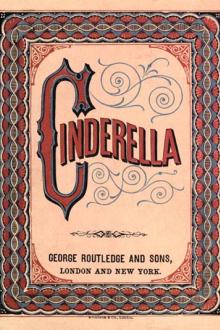The Works of Edgar Allan Poe — Volume 2 by Edgar Allan Poe (books for 6 year olds to read themselves txt) 📕

Read free book «The Works of Edgar Allan Poe — Volume 2 by Edgar Allan Poe (books for 6 year olds to read themselves txt) 📕» - read online or download for free at americanlibrarybooks.com
- Author: Edgar Allan Poe
Read book online «The Works of Edgar Allan Poe — Volume 2 by Edgar Allan Poe (books for 6 year olds to read themselves txt) 📕». Author - Edgar Allan Poe
The lake was deep—at some points thirty feet—but the rivulet seldom exceeded three, while its greatest width was about eight. Its bottom and banks were as those of the pond—if a defect could have been attributed, in point of picturesqueness, it was that of excessive neatness.
The expanse of the green turf was relieved, here and there, by an occasional showy shrub, such as the hydrangea, or the common snowball, or the aromatic seringa; or, more frequently, by a clump of geraniums blossoming gorgeously in great varieties. These latter grew in pots which were carefully buried in the soil, so as to give the plants the appearance of being indigenous. Besides all this, the lawn’s velvet was exquisitely spotted with sheep—a considerable flock of which roamed about the vale, in company with three tamed deer, and a vast number of brilliantly-plumed ducks. A very large mastiff seemed to be in vigilant attendance upon these animals, each and all.
Along the eastern and western cliffs—where, toward the upper portion of the amphitheatre, the boundaries were more or less precipitous—grew ivy in great profusion—so that only here and there could even a glimpse of the naked rock be obtained. The northern precipice, in like manner, was almost entirely clothed by grape-vines of rare luxuriance; some springing from the soil at the base of the cliff, and others from ledges on its face.
The slight elevation which formed the lower boundary of this little domain, was crowned by a neat stone wall, of sufficient height to prevent the escape of the deer. Nothing of the fence kind was observable elsewhere; for nowhere else was an artificial enclosure needed:—any stray sheep, for example, which should attempt to make its way out of the vale by means of the ravine, would find its progress arrested, after a few yards’ advance, by the precipitous ledge of rock over which tumbled the cascade that had arrested my attention as I first drew near the domain. In short, the only ingress or egress was through a gate occupying a rocky pass in the road, a few paces below the point at which I stopped to reconnoitre the scene.
I have described the brook as meandering very irregularly through the whole of its course. Its two general directions, as I have said, were first from west to east, and then from north to south. At the turn, the stream, sweeping backward, made an almost circular loop, so as to form a peninsula which was very nearly an island, and which included about the sixteenth of an acre. On this peninsula stood a dwelling-house—and when I say that this house, like the infernal terrace seen by Vathek, “etait d’une architecture inconnue dans les annales de la terre,” I mean, merely, that its tout ensemble struck me with the keenest sense of combined novelty and propriety—in a word, of poetry—(for, than in the words just employed, I could scarcely give, of poetry in the abstract, a more rigorous definition)—and I do not mean that merely outre was perceptible in any respect.
In fact nothing could well be more simple—more utterly unpretending than this cottage. Its marvellous effect lay altogether in its artistic arrangement as a picture. I could have fancied, while I looked at it, that some eminent landscape-painter had built it with his brush.
The point of view from which I first saw the valley, was not altogether, although it was nearly, the best point from which to survey the house. I will therefore describe it as I afterwards saw it—from a position on the stone wall at the southern extreme of the amphitheatre.
The main building was about twenty-four feet long and sixteen broad—certainly not more. Its total height, from the ground to the apex of the roof, could not have exceeded eighteen feet. To the west end of this structure was attached one about a third smaller in all its proportions:—the line of its front standing back about two yards from that of the larger house, and the line of its roof, of course, being considerably depressed below that of the roof adjoining. At right angles to these buildings, and from the rear of the main one—not exactly in the middle—extended a third compartment, very small—being, in general, one-third less than the western wing. The roofs of the two larger were very steep—sweeping down from the ridge-beam with a long concave curve, and extending at least four feet beyond the walls in front, so as to form the roofs of two piazzas. These latter roofs, of course, needed no support; but as they had the air of needing it, slight and perfectly plain pillars were inserted at the corners alone. The roof of the northern wing was merely an extension of a portion of the main roof. Between the chief building and western wing arose a very tall and rather slender square chimney of hard Dutch bricks, alternately black and red:—a slight cornice of projecting bricks at the top. Over the gables the roofs also projected very much:—in the main building about four feet to the east and two to the west. The principal door was not exactly in the main division, being a little to the east—while the two windows were to the west. These latter did not extend to the floor, but were much longer and narrower than usual—they had single shutters like doors—the panes were of lozenge form, but quite large. The door itself had its upper half of glass, also in lozenge panes—a movable shutter secured it at night. The door to the west wing was in its gable, and quite simple—a single window looked out to the south. There was no external door to the north wing, and it also had only one window to the east.
The blank wall of the eastern gable was relieved by stairs (with a balustrade) running diagonally across it—the ascent being from the





Comments (0)